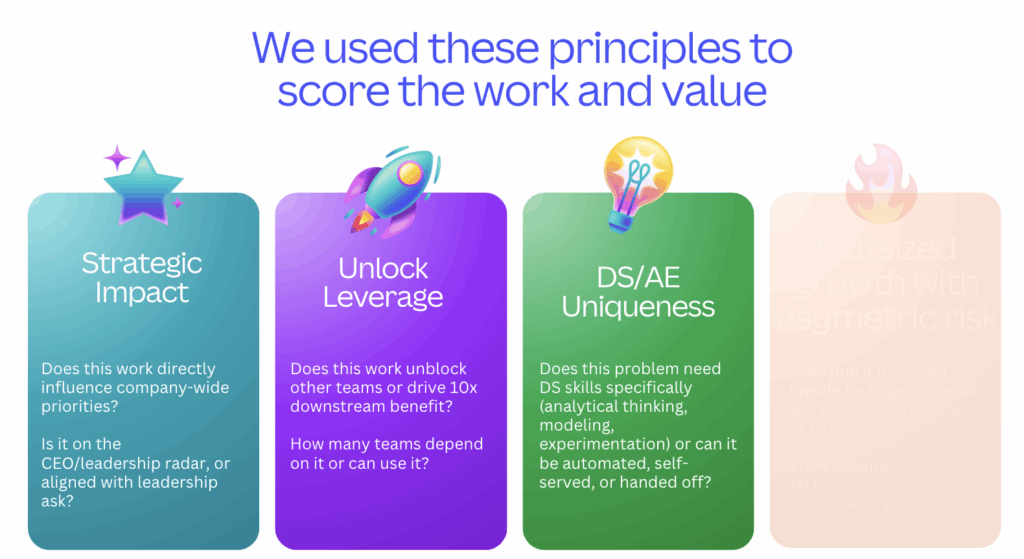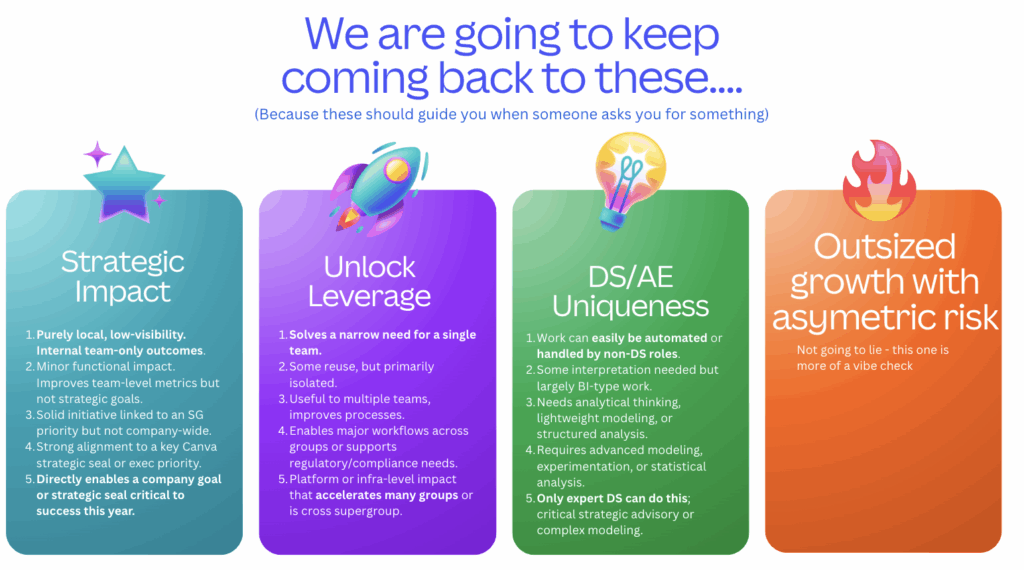#279: The Process(es) of Analytics (We Have Thoughts)
Description
What is “process” in analytics? On the one hand, it can be seen as a detailed sequence of minutia by which anything that needs to be repeated in the world of analytics gets carried out in a structured and consistent manner. On the other hand, that’s the sort of definition that strikes terror and rage in the hearts of many souls. Some of those souls are co-hosts of this podcast. Even the <ahem> more process-oriented co-hosts bristle at such a definition (but for different reasons). So, what ARE some of the core processes in analytics? And, what is the appropriate balance between establishing a prescriptive structure and leaving sufficient flexibility to allow human judgment to adapt a process to fit specific situations? Those are the sorts of questions tackled on this episode, which was released on time with all of its underlying component parts thanks to a reasonably robust…process.
Links to Resources Mentioned in the Show
- Analysis planning template (let us know if you use or consider using this one; we’re curious, as it’s come up on the show before!)
- The framework about which Moe was relentlessly grilled:
Photo by Alex Lion on Unsplash
Episode Transcript
00:00:05 .75 [Announcer]: Welcome to the Analytics Power Hour. Analytics topics covered conversationally and sometimes with explicit language.
00:00:14 .22 [Michael Helbling]: Hey everybody, welcome to the Analytics Power Hour. This is episode 279. Process. It’s just a series of actions taken to achieve a particular result, but somehow it can become so much more than that in good and bad ways. A good analyst can tell when the same problem pops up over and over again in their work and they’ll do something about it. And that sometimes there’s not enough process in that case. And alternatively, you might exist in an environment where there’s too much and you work endlessly and never know if you had any impact or meaning. So, I don’t know, let’s focus on the just enough part and try to make our work the best it can be. And that was part of my process. Let me introduce my co-hosts. Moee Kiss, how you going?
00:01:06 .70 [Moe Kiss]: I’m going great. Thanks for asking.
00:01:09 .75 [Michael Helbling]: Oh, it’s so nice to be able to ask you how you’re going, because I ask the other co-hosts, and they don’t understand what I’m talking about. It’s fair. Good. And Val Kroll, hey, how you doing?
00:01:22 .64 [Val Kroll]: Pretty good, Michael.
00:01:25 .23 [Michael Helbling]: Da’ bears. It’s been a dream. Well, no, I’m trying to do a Chicago greeting, but, you know,
00:01:33 .51 [Val Kroll]: I like it.
00:01:33 .93 [Michael Helbling]: And then, of course, Tim Wilson, howdy partner. I’ll do. Wow. Julie Hoyer, go Browns.
00:01:43 .32 [Julie Hoyer]: Oh, go Browns.
00:01:45 .04 [Michael Helbling]: Come on now. I’ll take it, I guess. Hey, I’m a Browns fan. All right. Let’s dive into this process discussion. I think, you know, Julie, I want to start with you because I think this was your idea. What? What it was.
00:02:03 .36 [Julie Hoyer]: I don’t remember that. I believe so.
00:02:06 .05 [Tim Wilson]: Let the record show. Let me check the notes from our process.
00:02:09 .44 [Michael Helbling]: We have a process for this. We recorded this. But I think, you know, you know, As we look into this sort of thing, like talk to a little bit, kick us off a little bit about where you’ve seen process maybe not work so well or not where a lack of process has affected you and your work. Maybe let’s start with that and then we’ll kind of like wind up from there. Oh, wow. Or if you prefer to do positive, you could give an example of where you saw a great process work and you could be like, oh, I’m so awesome that I created this amazing process, but I was gonna let you save that for later in the show.
00:02:48 .63 [Val Kroll]: Problems then solution.
00:02:51 .28 [Michael Helbling]: Transformative narrative arc for your character in the podcast.
00:02:58 .13 [Julie Hoyer]: All right, well, to open this up, I guess my first thoughts on process. I will say it’s been interesting because every client I work on, our process is slightly different. You’d like to think we set up a repeatable process and we’re going to come to a conclusion that this is really effective and we’re just gonna keep rolling with it. But every client brings kind of their own process to the table. So I will say that I am really excited about this discussion because I’ve seen it where certain clients have a ton of process and it just slows us down immensely or they want to automate a lot of the process like do everything asynchronously and you know you have to have a lot of technology and tools and logins and interfaces to like communicate between us and their team and it’s amazing how like they’re trying to do it for effectiveness and clarity and it slows us way down and I think a lot of times It burdens us where we lose the ability to have like a personal relationship with them. And then on the other extreme, when there’s no process, it does feel like you’re kind of like flying by the seat of your pants. And sometimes it’s a little chaotic. So I’ve definitely seen the gamut, the spread.
00:04:15 .83 [Moe Kiss]: Sorry, Julie, when you say no process, Can you describe what that looks like? Because I also like a minor process would probably look quite different to your experience like working with different clients. But what does a client with their process look like for the team?
00:04:32 .43 [Julie Hoyer]: Ones that don’t really love even like a weekly cadence touch point, they’re like, we’ll reach out when we want to reach out and you get like the chaotic random email. And then the team is scrambling and it’s a little unclear who you’re exact, you know, direct stakeholder. Some of them are like, oh, well, I told my coworker just to directly email you. And we’re like, we don’t know who this is. Are we allowed to pick this up and do it? Can we schedule time with you? I now have to loop back with the stakeholder. So that’s kind of my experience of what I’d call no process.
00:05:06 .18 [Tim Wilson]: I mean, it seems like there’s from like an analytical intake, there are cases where Like to me, one extreme is when it’s assuming you have, this is a person who I am supposed to address their needs as an analyst. So we are going to meet and have a conversation and I will uncover the requirements and the need and the underlying problem and we’ll kind of conversationally, kind of process free, gather the requirements and then I will go back and and execute. That’s like no process and it’s efficient or low process and it can be efficient. The kicker is that when you roll with that and you have different people not necessarily having enough of a discussion and then something gets missed, a timeline isn’t communicated or a scope or a timeframe, I’ve seen it start to swing in the other direction. It’s like, well, now when you meet with a, sure, sure, sure, we still want you to meet with the stakeholder, but here’s the form. And you got to make sure that everything on this brief or this intake form or whatever it is, is sort of filled out. And there are times where it gets to like, but some of this stuff isn’t relevant, but it’s a required field, no matter what that intake is. And it tries to make the process, and I’m thinking specifically on kind of, analysis projects intake, not necessarily implementation or others. It can get to where, well, now you’ve removed judgment because you said, well, we had one issue one time. Let’s now inject more structure into the process. And that’s how processes become bloated, becaus







